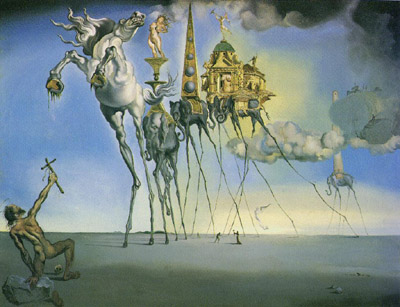Title: Soft Construction with Boiled Beans (Premonition of Civil war) (1936) | Salvador Dali
Artwork Description and Analysis:
This painting is an allegorical response to the Spanish Civil War of 1936-1939, but it is also a garish and gruesome depiction of a body destroying itself. Dali painted this work prior to General Franco’s invasion, yet it predicts the violence, anxiety, and doom many Spaniards felt during Franco’s later rule. Soft Construction with Boiled Beans is a fine example of a Dali composition that simultaneously expresses his sexual obsessions as well as his political outrage.
Salvador Dali’s most famous works | Image source: MoMA & Wikipedia
Surrealism is a cultural movement that began in the early 1920s, and is best known for its visual arts and literature. The aim was to “resolve the previously contradictory conditions of dream and reality.” Artists painted unnerving, illogical scenes with photographic precision, created strange creatures from everyday objects and developed painting techniques that allowed the unconscious to express itself and/or an idea/concept.
Surrealism was a controversial movement between the two World Wars in which the artist attempted to portray, express, or interpret the workings of the subconscious mind; in painting it found expression in two techniques, the realistic (Dali) and the abstract (Miró).
Surrealist works feature the element of surprise, unexpected juxtapositions and non sequitur; however, many Surrealist artists regard their work as an expression of the philosophical movement first and foremost, with the works being an artifact. Surrealism developed out of the Dada activities during World War I and the most important center of the movement was Paris. From the 1920s onward, the movement spread around the globe, eventually affecting the visual arts, literature, film, and music of many countries and languages, as well as political thought and practice, philosophy, and social theory.
Most influential surrealist artists
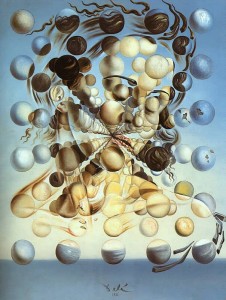 Salvador Dali (1904-1989) was a prominent Spanish surrealist painter and one of the most famous artists of the 20th century. He was a skilled draftsman, best known for the striking and bizarre images in his surrealist work. His painterly skills are often attributed to the influence of Renaissance masters. His best-known work, The Persistence of Memory, was completed in August 1931. Dalí’s expansive artistic repertoire included film, sculpture, and photography, in collaboration with a range of artists in a variety of media.
Salvador Dali (1904-1989) was a prominent Spanish surrealist painter and one of the most famous artists of the 20th century. He was a skilled draftsman, best known for the striking and bizarre images in his surrealist work. His painterly skills are often attributed to the influence of Renaissance masters. His best-known work, The Persistence of Memory, was completed in August 1931. Dalí’s expansive artistic repertoire included film, sculpture, and photography, in collaboration with a range of artists in a variety of media.
Dalí was highly imaginative, and also enjoyed indulging in unusual and grandiose behavior. His eccentric manner and attention-grabbing public actions sometimes drew more attention than his artwork, to the dismay of those who held his work in high esteem, and to the irritation of his critics. Dalí employed extensive symbolism in his work. For instance, the hallmark “melting watches” that first appear in The Persistence of Memory suggest Einstein’s theory that time is relative and not fixed.
Salvador Dalí has been cited as major inspiration from many modern artists, such as Damien Hirst, Noel Fielding, Jeff Koons and most other modern surrealists. Salvador Dalí’s manic expression and famous moustache have made him something of a cultural icon for the bizarre and surreal.

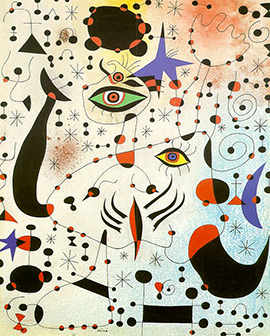
Joan Miró (1893–1983) was a Spanish surrealist painter, sculptor, and ceramicist born in Barcelona. In numerous interviews dating from the 1930s onwards, Miró expressed contempt for conventional painting methods as a way of supporting bourgeois society, and famously declared an “assassination of painting” in favor of upsetting the visual elements of established painting.
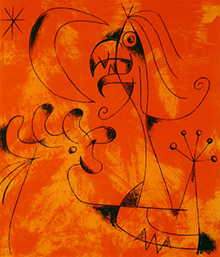
Starting in 1920, Miró developed a very precise style, picking out every element in isolation and detail and arranging them in deliberate composition. These works, including House with Palm Tree (1918), Nude with a Mirror (1919), and The Table – Still Life with Rabbit (1920), show the clear influence of Cubism, although in a restrained way, being applied to only a proportion of the subject.
In Miro’s works, the concentration on each element as equally important was a key step towards generating a pictorial sign for each element. The background is rendered in flat or patterned in simple areas, highlighting the separation of figure and ground, which would become important in his mature style.
Miró has been a significant influence on late 20th-century art, in particular the American abstract expressionist artists such as Motherwell, Calder, Gorky, Pollock, Matta and Rothko, while his lyrical abstractions[34] and color field paintings were precursors of that style by artists such as Frankenthaler, Olitski and Louis and others. His work has also influenced modern designers, including Paul Rand and Lucienne Day, and influenced recent painters such as Julian Hatton.
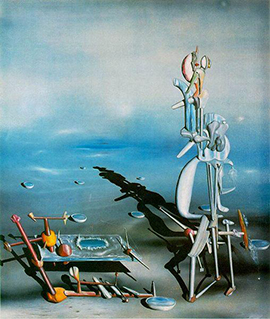
Yves Tanguy (1900–1955) was a French surrealist painter. Tanguy’s paintings have a unique, immediately recognizable style of nonrepresentational surrealism. They show vast, abstract landscapes, mostly in a tightly limited palette of colors, only occasionally showing flashes of contrasting color accents. Typically, these alien landscapes are populated with various abstract shapes, sometimes angular and sharp as shards of glass, sometimes with an intriguingly organic look to them, like giant amoebae suddenly turned to stone.

Tanguy’s style was an important influence on several younger painters, such as Roberto Matta, Wolfgang Paalen, and Esteban Francés, who adopted a Surrealist style in the 1930s. Later, Tanguy’s paintings influenced the style of the French animated movie Le Roi et l’oiseau, by Paul Grimault and Prévert.
Superrealism is an artistic movement originated in the late sixties and early seventies when artists began producing paintings that appeared to be photographs. In painting, Superrealism is synonymous to Photo-Realism. Also know as Hyper-realism, the movement was most popular in the United States but spread to some parts of Western Europe. In the sculpture medium, artists often used casts of the human figure to create true-to-form.
